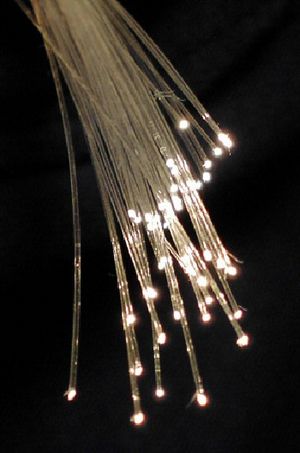Transmission medium facts for kids
A transmission medium is anything that can carry energy from one place to another. Think of it like a path or a road for energy! This "something" can be a solid, a liquid, a gas, or even a special hot gas called plasma.
For example, when you hear your friend talk, the sound travels through the air, which is a gas. So, air is the transmission medium for sound. But sound can also travel through water (a liquid) or a wall (a solid).
Another example is electricity. A wire is a solid material that helps electrons move, carrying electricity from one place to another.
Every type of transmission medium has its good points and its not-so-good points. These can include how much it costs, how much information it can carry at once (called bandwidth), how speedy the transmission is, and how far the energy can travel.
Contents
How We Send Information
In the world of telecommunications, a transmission medium is what helps us send messages and data. This is how your phone calls, internet, and TV signals travel from one device to another.
Physical Connections
Physical mediums are actual wires or cables that connect different devices. Imagine them as the physical highways for information. Some common types include twisted pair cables, coaxial cables, and fiber optic cables.
Twisted Pair Cables
Twisted pair cables were often used for old-fashioned telephone lines. Even today, they are still very common in networks, like the ones that connect computers in a school or office. They get their name because they have many thin, insulated wires that are twisted around each other. This twisting helps reduce interference and keeps the signal clear. A single twisted pair cable can have thousands of these twisted wire pairs inside!
Coaxial Cables
Coaxial cables are another type of physical transmission medium. They are built differently from twisted pair cables. A coaxial cable has a central copper wire, surrounded by an insulating layer, then a metal shield, and finally an outer plastic cover. This design makes them very good at carrying high-frequency signals, like those used for cable TV and internet connections.
Fiber Optic Cables
Fiber optic cables are quite amazing! Instead of using electricity, they send information using light. These cables are made of very thin strands of glass or plastic, about as thin as a human hair. Light signals bounce along these strands, traveling incredibly fast and carrying huge amounts of data. This is why fiber optic internet is so quick!
Related topics
Images for kids
See also
 In Spanish: Medio de transmisión para niños
In Spanish: Medio de transmisión para niños







